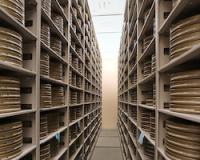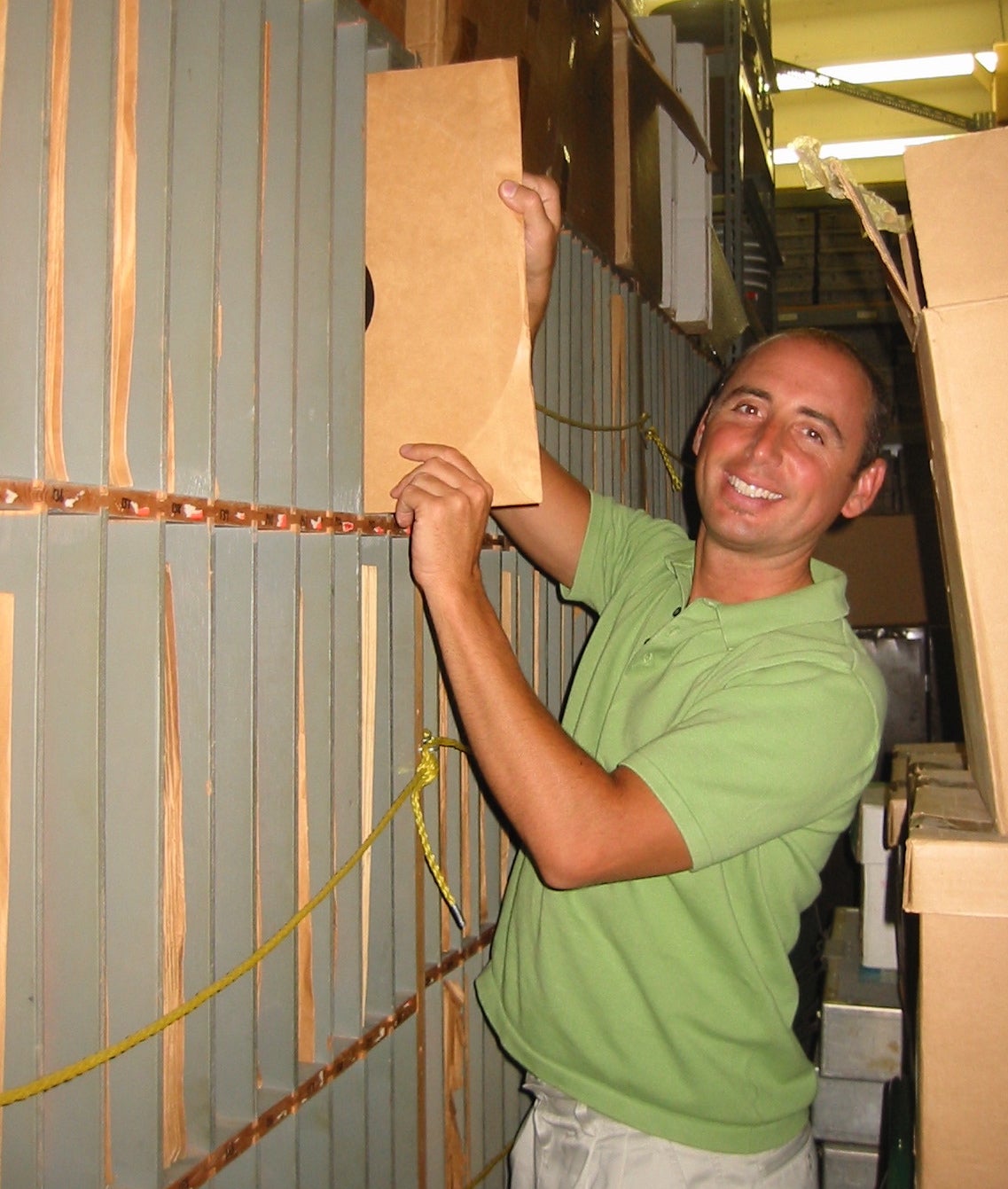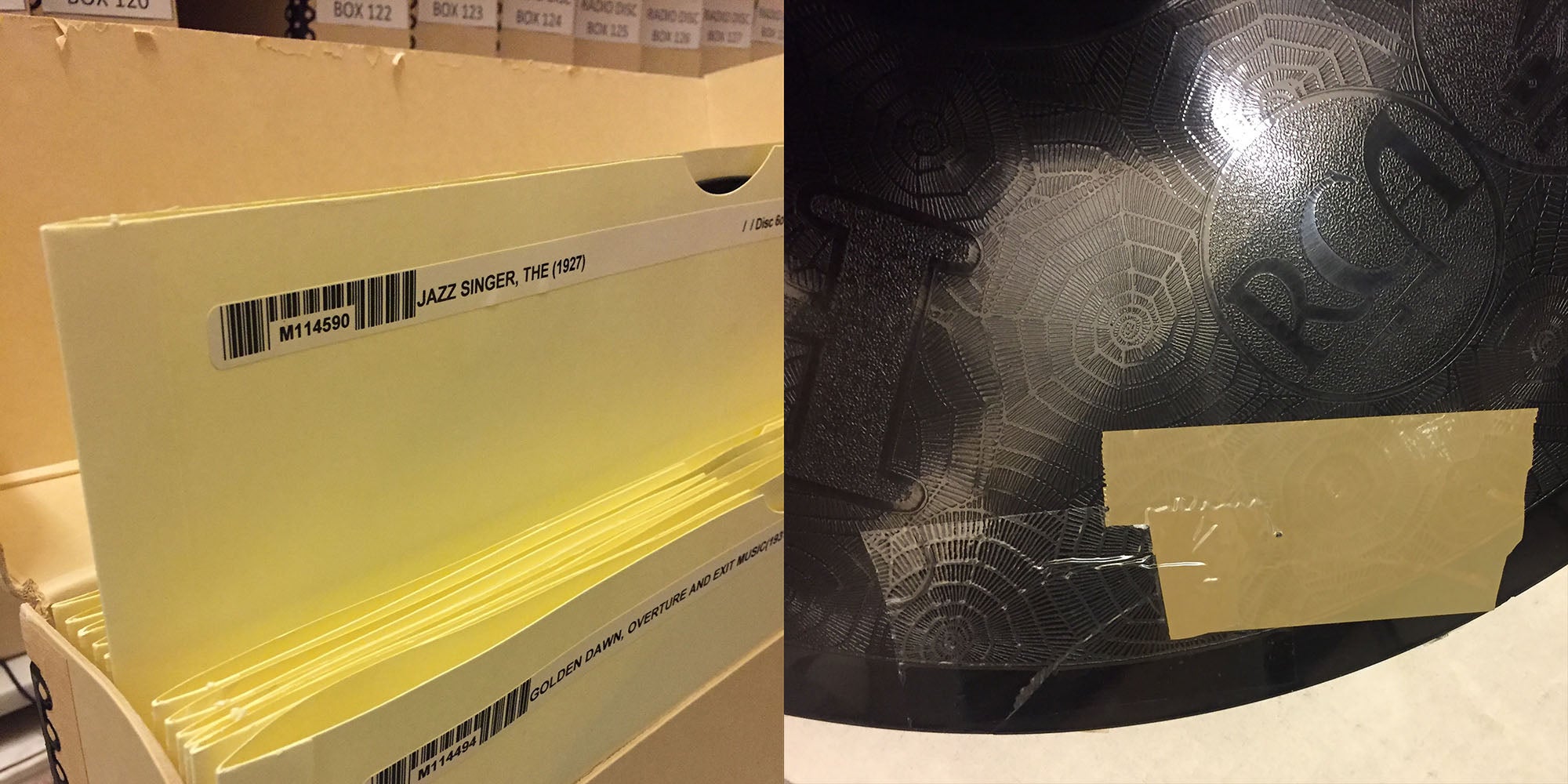
Founded by Warner Bros. a year before the storied debut of The Jazz Singer (1927), Vitaphone Corp. filmed nearly 2,000 short talkies through 1930, capturing the “anything goes” energy of the Jazz Age and the top talents of the vaudeville circuit. A milestone in synchronized sound technology, Vitaphone films were distributed with 16-inch phonograph discs, a system that became obsolete once optical soundtracks were printed directly onto celluloid. This has posed a unique preservation challenge, as both the films and the fragile soundtrack discs must be available in good condition.
Continuing its long history of preserving and showcasing Vitaphone films, the Archive presents an evening of sublimely entertaining Vitaphone Varieties on the big screen this Sunday, April 9 at 7 p.m. To learn more we interviewed motion picture archivist Todd Wiener:
Could you tell us about the Vitaphone collection at UCLA Film & Television Archive?
The Warner Bros. Vitaphone Disc Collection at UCLA has a great backstory: the studio was undergoing an extensive remodel of their old 1929 Recording Stage and a large cache of Vitaphone discs was discovered when sound-proofing curtains were removed from the sound stage by workers. Ron Hutchinson of The Vitaphone Project implied that some of the rock bands that used to record in this space would throw discs around like Frisbees. Given some of the cracks and chips on some of the discs – I’m not surprised to hear this rumor.
Right: Todd Wiener in 2004 with the original Vitaphone cabinets that were rescued. All of the discs have been re-housed in acid free sleeves and archival containers.
What do you find interesting about Vitaphone films?
Film in general (and particularly film musicals) killed off the popular live vaudevillian performances of the day. Ironically, the early Vitaphone shorts produced by Warner Bros. are the only moving image documentation of many of the top vaudevillians performing their acts.
Could you talk about UCLA Film & Television Archive's collaboration with the Warner Archive and other organizations?
The Vitaphone Project was formed in 1991 to seek out the soundtrack discs as well as to partner with the studios (particularly Warner Bros.), film archives like UCLA, Library of Congress and the BFI, and private collectors worldwide in order to get these historic shorts restored and seen once again on the big screen. Since its inception The Vitaphone Project has located thousands of discs and has helped fund over 120 restorations. Before he retired, UCLA Preservation Officer Bob Gitt collaborated with our dear colleagues at the Library of Congress and at Warner Bros. on many of the Vitaphone short restorations that are now part of our UCLA Collection. Since then, Ned Price and the Warner Bros. team have accessed holdings at both UCLA and the Library of Congress to continue this preservation work.
From the UCLA collection, a damaged copy of a 16-inch Vitaphone disc for The Jazz Singer (1927).
Watch The Vitaphone Project's video salute to 25 years of Vitaphone restorations:
Vitaphone Varieties screens at the Billy Wilder Theater on Sunday, April 9 at 7 p.m.
< Back to the Archive Blog






 Mobile Navigation
Mobile Navigation



